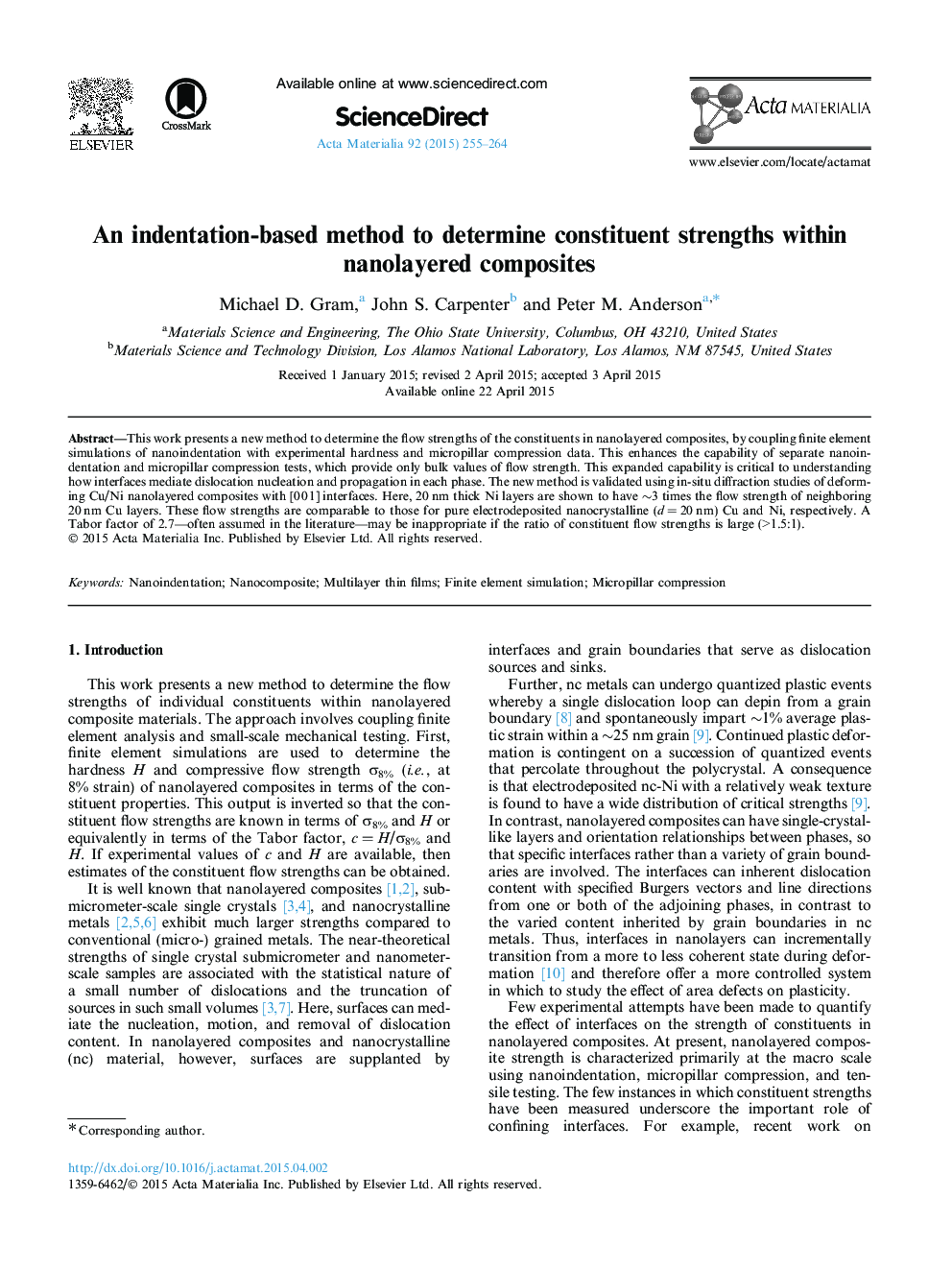| Article ID | Journal | Published Year | Pages | File Type |
|---|---|---|---|---|
| 1445403 | Acta Materialia | 2015 | 10 Pages |
This work presents a new method to determine the flow strengths of the constituents in nanolayered composites, by coupling finite element simulations of nanoindentation with experimental hardness and micropillar compression data. This enhances the capability of separate nanoindentation and micropillar compression tests, which provide only bulk values of flow strength. This expanded capability is critical to understanding how interfaces mediate dislocation nucleation and propagation in each phase. The new method is validated using in-situ diffraction studies of deforming Cu/Ni nanolayered composites with [0 0 1] interfaces. Here, 20 nm thick Ni layers are shown to have ∼3 times the flow strength of neighboring 20 nm Cu layers. These flow strengths are comparable to those for pure electrodeposited nanocrystalline (d = 20 nm) Cu and Ni, respectively. A Tabor factor of 2.7—often assumed in the literature—may be inappropriate if the ratio of constituent flow strengths is large (>1.5:1).
Graphical abstractFigure optionsDownload full-size imageDownload high-quality image (135 K)Download as PowerPoint slide
